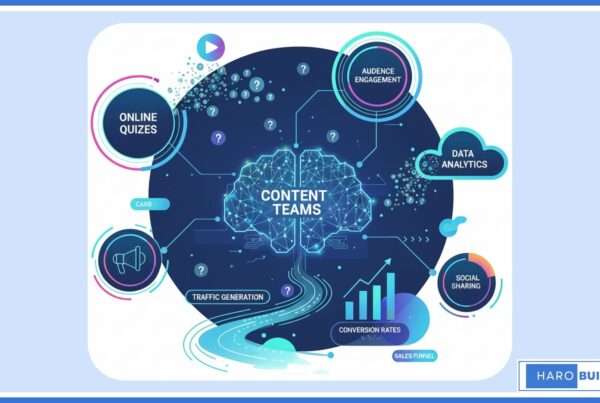
Struggling to retain customers despite numerous marketing efforts? Research shows that acquiring new customers costs five times more than retaining existing ones. A well-planned lifecycle marketing strategy addresses this issue by engaging customers at every stage of their journey.
Lifecycle marketing involves using targeted techniques to guide customers from initial awareness to long-term loyalty. This approach requires understanding customer profiles and implementing effective marketing techniques.
By managing each stage of the customer journey, businesses can enhance customer satisfaction and increase lifetime value. This article provides a comprehensive guide to mastering lifecycle marketing and achieving a successful lifecycle.
Importance of Lifecycle Marketing
Lifecycle marketing maximizes customer engagement by addressing each stage of the customer journey. This approach helps acquire new customers, retain loyal customers, and increase customer lifetime value. Effective marketing strategies include personalized marketing and marketing automation. By tailoring marketing messages to different stages, marketing efforts become more relevant and impactful. Utilizing customer data ensures that campaigns are well-targeted, enhancing the overall customer experience.
Stages of Lifecycle Marketing

1. Initial Contact:
Initial contact marks the beginning of the customer lifecycle. Potential customers become aware of your brand through various marketing channels. An effective marketing campaign introduces the brand and provides valuable information. Personalize initial interactions to capture attention and build interest. Utilizing email marketing can nurture potential customers and guide them through the sales funnel. This stage sets the foundation for future customer engagement and retention. As emails are the foundation of this process make sure to create a DKIM record and craft the perfect subject lines to reach your prospect and avoid spam triggers.
2. Engagement and Nurturing:
Engagement and nurturing involve deepening the relationship with potential customers. Provide relevant content through email marketing and personalized marketing messages. Use marketing automation to deliver timely, personalized communications. Focus on enhancing the customer experience by offering valuable insights and addressing their needs. Effective customer engagement strategies build trust and move customers further down the funnel. This stage is crucial for converting potential customers into loyal customers.
3. Conversion:
Conversion is the stage where potential customers become paying customers. Tailored marketing strategies, including personalized offers and promotions, encourage purchases. Analyze customer data to identify the best marketing approach for closing sales. Use marketing automation to send targeted messages at optimal times. A successful conversion strategy increases customer lifetime value and boosts overall sales. Ensuring a seamless purchasing process enhances the customer experience and encourages repeat business.
4. Retention and Loyalty:
Retention and loyalty focus on maintaining long-term relationships with customers. Implement loyalty programs to reward repeat purchases and encourage customer retention. Use content marketing to keep customers engaged and informed. Personalized marketing efforts ensure that customers feel valued and understood. Analyze customer data to refine marketing strategies and improve customer lifetime value. Retaining loyal customers reduces acquisition costs and increases profitability.
Customer Lifecycle Marketing Strategies
Personalization Techniques:
Personalized marketing enhances the customer experience by tailoring messages to individual needs. For instance, using customer data to send targeted email marketing campaigns can boost engagement. A potential customer who frequently browses fitness products might receive personalized recommendations and exclusive discounts. By personalizing content, businesses can increase customer engagement and retention, making the marketing approach more effective. Moreover, they can use a LinkedIn scraper to collect any relevant data about their prospects and take their personalization efforts one step further. Personalization helps convert potential customers into loyal customers by addressing their specific preferences and enhancing the customer journey through each lifecycle stage. For businesses aiming to optimize their data strategies, Data Warehousing Consulting can play a crucial role in supporting personalized marketing initiatives.
Segmentation Methods:
Segmentation divides the customer base into groups based on common characteristics. This strategy allows marketing efforts to target specific segments with relevant messages. For example, a marketing team can segment customers by purchase history, sending different marketing messages to new customers versus loyal customers. By personalizing campaigns for each segment, customer retention and engagement can be significantly improved. Segmenting potential customers by demographics or behavior enables more precise and effective marketing strategies, enhancing the overall customer experience.
Automation Tools:
Marketing automation tools streamline marketing campaigns, ensuring consistent and timely communication. Tools like email marketing platforms can automate customer engagement across different stages of the lifecycle. For example, a business can set up automated welcome emails for new customers and loyalty program updates for repeat buyers. Automation reduces manual effort and ensures that marketing messages are delivered at optimal times, increasing the effectiveness of campaigns. Using automation, businesses can maintain regular contact with customers, enhancing their lifetime value and engagement throughout the funnel.
Content Marketing Approaches:
Content marketing plays a crucial role in customer lifecycle marketing by providing valuable information at each stage. For example, creating blog posts, videos, and infographics tailored to different stages of the customer journey can attract and retain customers. A potential customer researching products might find a detailed blog post helpful, while a loyal customer could benefit from advanced tips shared in a newsletter. Effective content marketing strategies can increase customer retention by continuously providing value, thereby enhancing the customer experience and supporting the overall marketing campaign.
Lifecycle Marketing Campaigns
Email Marketing:
Lifecycle email marketing involves creating targeted campaigns that address different stages of the customer lifecycle. Effective email marketing focuses on customer acquisition, engagement, and retention. Personalized content and automated workflows ensure messages are timely and relevant.
These strategies help build long-term customer relationships and enhance customer satisfaction. By addressing various stages in the customer journey, email marketing campaigns increase customer lifetime value and loyalty.
Social Media:
Social media plays a crucial role in customer lifecycle marketing campaigns. Engaging content tailored to different stages of the customer lifecycle can boost brand awareness and customer loyalty. Social media platforms provide an opportunity for real-time interaction and customer feedback, which is essential for improving customer satisfaction. Using a logo maker can help businesses create visually appealing brand elements for their social media profiles.
Effective social media strategies help in understanding customer behavior, fostering repeat customers, and building long-term customer relationships.
Multi-channel:
Multi-channel lifecycle marketing campaigns integrate various marketing techniques across different platforms. This approach ensures a consistent message reaches customers at different lifecycle stages. Combining email, social media, launch events, and other channels enhances customer relationship management and increases customer engagement.
Multi-channel strategies are effective in targeting the ideal customer profile and ensuring customer satisfaction across the customer journey. These campaigns contribute to successful customer lifecycle marketing by addressing the overall customer experience.
Best Practices in Lifecycle Marketing
- Segment customers effectively to tailor marketing efforts to specific groups, increasing relevance and engagement.
- Personalize communication to address individual customer needs, enhancing the customer experience.
- Utilize automation tools to streamline processes and ensure timely interactions with customers.
- Analyze customer data regularly to understand behaviors and adjust strategies accordingly.
- Integrate customer feedback into marketing plans to improve services and meet customer expectations.
- Focus on customer retention strategies to maintain long-term relationships and reduce churn.
- Develop a comprehensive content strategy that addresses different lifecycle stages, providing valuable information.
- Implement multi-channel campaigns to reach customers through their preferred communication platforms.
- Monitor key metrics such as conversion rates and customer lifetime value to measure success.
- Continuously improve marketing strategies based on data insights and industry trends.
Benefits of Customer Lifecycle Marketing
- Improves customer retention by engaging customers at each stage, ensuring they stay loyal to the brand.
- Increases customer lifetime value through personalized and targeted marketing efforts.
- Enhances customer satisfaction by providing relevant and timely information, and fostering positive relationships.
- Drives higher conversion rates by nurturing leads effectively through the marketing funnel.
- Boosts customer loyalty by consistently delivering value and addressing customer needs.
- Streamlines marketing efforts through segmentation and automation, saving time and resources.
- Provides better customer insights through data analysis, helping to refine marketing strategies.
- Encourages repeat purchases by maintaining engagement and offering personalized promotions.
- Supports long-term customer relationships by understanding and responding to customer behavior.
- Increases overall marketing effectiveness by targeting the right message to the right audience at the right time.
- Facilitates customer acquisition by creating compelling marketing campaigns tailored to ideal customer profiles.
- Optimizes customer experience across various touchpoints, leading to positive word-of-mouth and brand advocacy.
Role of a Lifecycle Marketing Manager
- Develop and implement lifecycle marketing strategies to engage customers at different stages.
- Analyze customer data to identify trends and improve marketing efforts.
- Collaborate with other teams to ensure a cohesive customer experience.
- Monitor campaign performance and adjust tactics for better results.
- Manage marketing automation tools to streamline communication.
Digital Marketing vs Lifecycle Marketing
| Digital Marketing | Lifecycle Marketing |
| Focuses on broad online presence | Focuses on individual customer journeys |
| Utilizes various digital platforms | Tailors communication to lifecycle stages |
| Aims to attract new customers | Aims to retain and engage existing customers |
| Emphasizes brand awareness | Emphasizes personalized engagement |
| Measures success by traffic and leads | Measures success by retention and loyalty |
| Involves broad audience targeting | Involves segmented and targeted strategies |
Conclusion
Lifecycle marketing focuses on understanding the customer journey and engaging them at every stage. Effective lifecycle marketing requires a well-planned strategy, utilizing various marketing techniques. This approach aims to increase customer loyalty and satisfaction. By analyzing customer profiles and behaviors, marketers can create targeted campaigns. These efforts help manage the entire customer journey effectively. Successful lifecycle marketing involves continuous improvement and adaptation. Implementing a robust lifecycle marketing plan ensures better customer relationship management and higher retention rates.
How do you plan to use lifecycle marketing to enhance your customer relationships?
FAQs
1. How does lifecycle marketing benefit businesses?
It improves customer retention and enhances overall customer satisfaction.
2. How do you create a lifecycle marketing plan?
Identify customer stages, set goals, and develop tailored marketing tactics.
3. Why is understanding the customer lifecycle important?
It allows businesses to provide relevant and timely interactions.
4. How does digital marketing integrate with lifecycle marketing?
Digital channels support targeted communications throughout the customer journey.
5. How can lifecycle email marketing improve customer engagement?
By sending targeted messages based on customer behavior and preferences.



